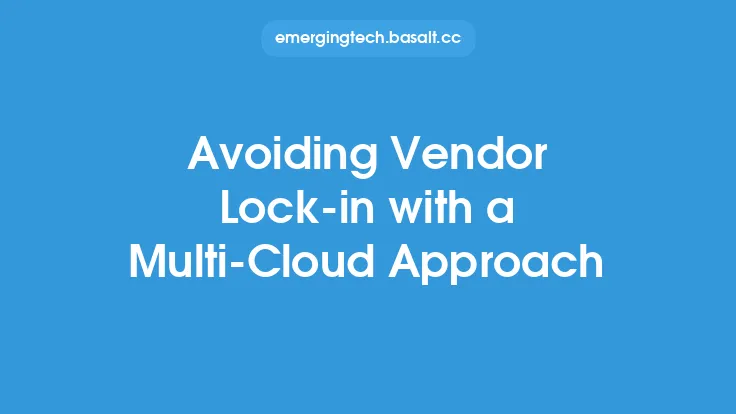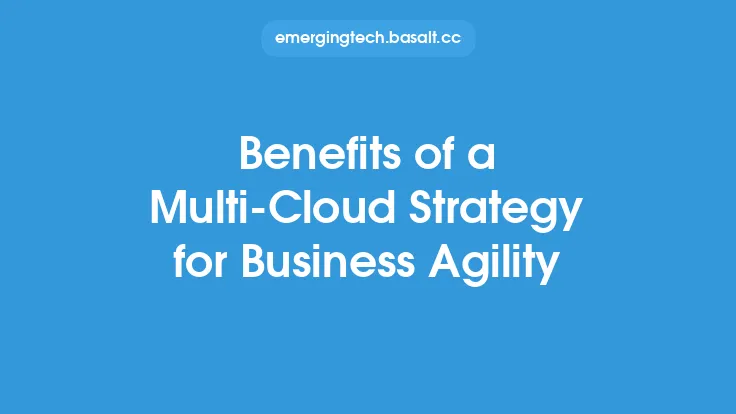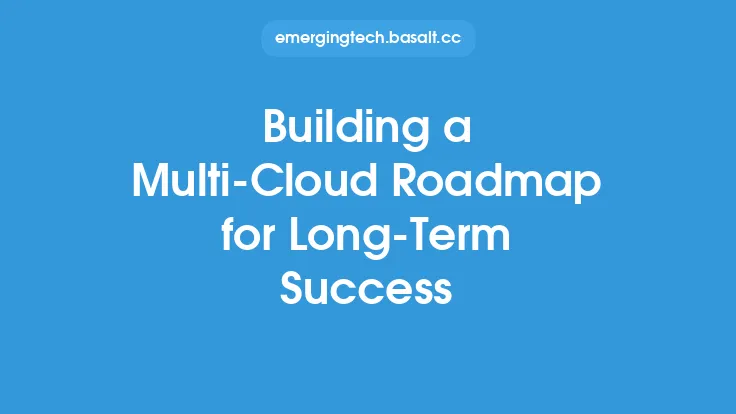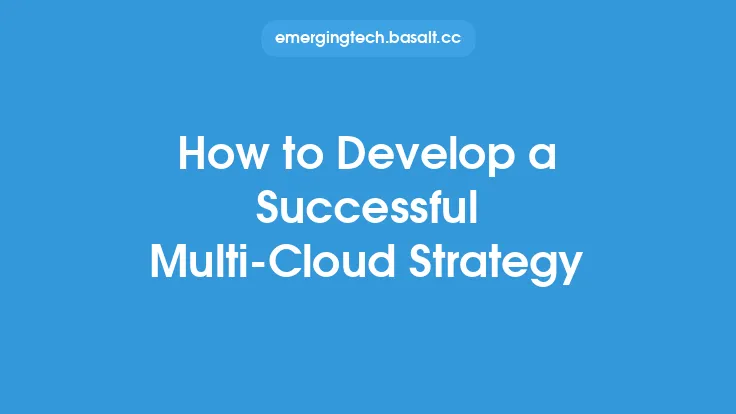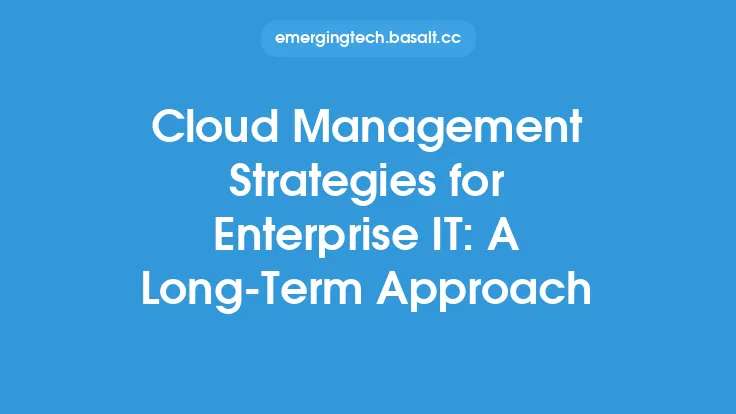In today's fast-paced digital landscape, businesses are constantly seeking ways to maximize their return on investment (ROI) while maintaining a competitive edge. One strategy that has gained significant attention in recent years is the adoption of a multi-cloud approach. By leveraging the strengths of multiple cloud providers, organizations can optimize their IT infrastructure, reduce costs, and improve overall efficiency. A well-planned multi-cloud strategy is crucial to achieving these benefits, and in this article, we will delve into the key considerations and best practices for maximizing ROI with a multi-cloud approach.
Understanding the Multi-Cloud Landscape
The multi-cloud landscape is characterized by a diverse range of cloud providers, each offering unique strengths and weaknesses. The three main categories of cloud providers are hyperscalers, tier-two providers, and niche players. Hyperscalers, such as Amazon Web Services (AWS), Microsoft Azure, and Google Cloud Platform (GCP), offer a broad range of services and features, but often come with a higher price tag. Tier-two providers, like IBM Cloud and Oracle Cloud, provide more specialized services and may offer better pricing options. Niche players, such as DigitalOcean and Linode, cater to specific use cases and often provide more flexible pricing models.
Assessing Cloud Provider Costs
To maximize ROI, it is essential to carefully assess the costs associated with each cloud provider. This includes not only the direct costs of infrastructure and services but also indirect costs, such as data transfer fees, support costs, and personnel expenses. A thorough cost analysis should consider factors like pricing models, discounts, and promotions, as well as the potential for cost savings through reserved instances, spot instances, and other optimization techniques.
Optimizing Resource Utilization
Optimizing resource utilization is critical to maximizing ROI in a multi-cloud environment. This involves right-sizing resources, such as virtual machines, storage, and databases, to match changing workload demands. Organizations can leverage automation tools, like Terraform and Ansible, to streamline resource provisioning and de-provisioning, reducing waste and minimizing costs. Additionally, implementing monitoring and analytics tools, such as Prometheus and Grafana, can help identify areas of inefficiency and provide insights for optimization.
Ensuring Security and Compliance
Security and compliance are top priorities in any cloud environment, and a multi-cloud strategy is no exception. Organizations must ensure that their cloud providers meet stringent security and compliance standards, such as SOC 2, ISO 27001, and GDPR. This includes implementing robust access controls, encrypting data in transit and at rest, and maintaining detailed audit logs. A well-planned multi-cloud strategy should also include a comprehensive incident response plan, outlining procedures for responding to security incidents and minimizing downtime.
Implementing a Cloud-Agnostic Architecture
A cloud-agnostic architecture is essential for maximizing ROI in a multi-cloud environment. This involves designing applications and services to be portable across multiple cloud providers, using open standards and APIs. Organizations can leverage containerization technologies, like Docker and Kubernetes, to deploy applications consistently across different cloud environments. Additionally, implementing a service mesh, like Istio or Linkerd, can help manage service discovery, traffic management, and security in a cloud-agnostic manner.
Managing Multi-Cloud Complexity
Managing complexity is a significant challenge in a multi-cloud environment. Organizations must contend with multiple cloud providers, each with their own set of services, APIs, and management tools. To mitigate this complexity, organizations can implement a cloud management platform (CMP), like RightScale or Cloudability, to provide a unified interface for managing cloud resources, monitoring usage, and optimizing costs. Additionally, leveraging automation tools, like CloudFormation and Azure Resource Manager, can help streamline cloud provisioning and reduce the risk of human error.
Measuring ROI and Performance
Measuring ROI and performance is critical to evaluating the success of a multi-cloud strategy. Organizations should establish clear key performance indicators (KPIs), such as cost savings, resource utilization, and application performance. Regularly monitoring and analyzing these KPIs can help identify areas for improvement and provide insights for optimization. Additionally, implementing a cloud cost management platform, like ParkMyCloud or Turbonomic, can help organizations track cloud costs, identify waste, and optimize resource utilization.
Conclusion
Maximizing ROI with a well-planned multi-cloud strategy requires careful consideration of several key factors, including cloud provider costs, resource utilization, security and compliance, cloud-agnostic architecture, complexity management, and performance measurement. By understanding the multi-cloud landscape, assessing cloud provider costs, optimizing resource utilization, ensuring security and compliance, implementing a cloud-agnostic architecture, managing complexity, and measuring ROI and performance, organizations can unlock the full potential of their multi-cloud environment and achieve significant cost savings, improved efficiency, and enhanced competitiveness.
